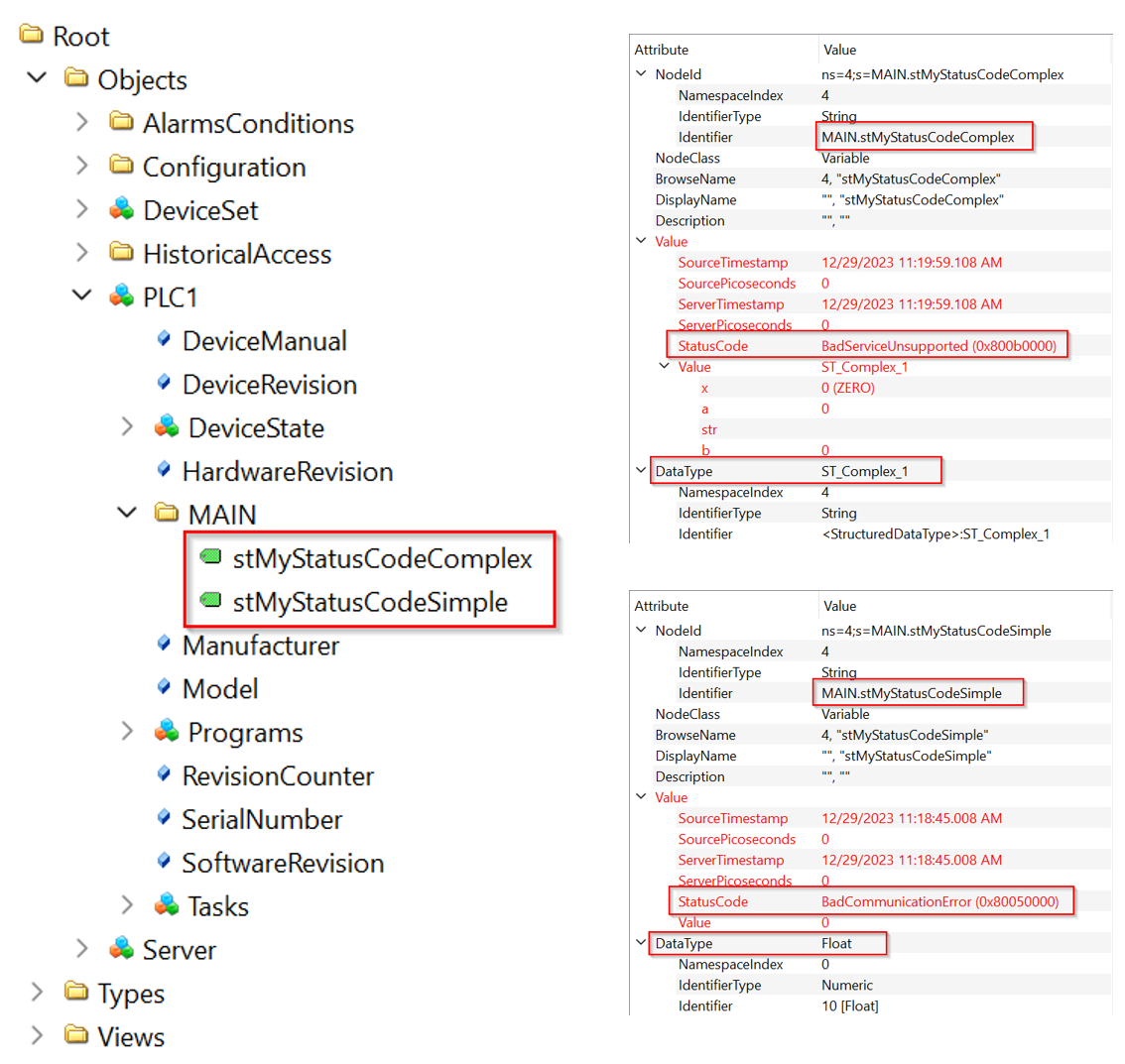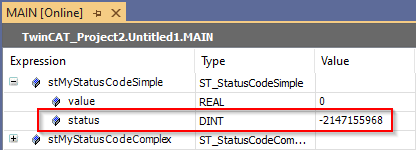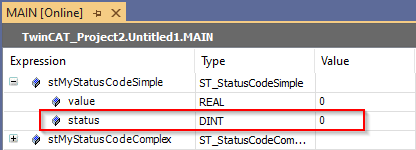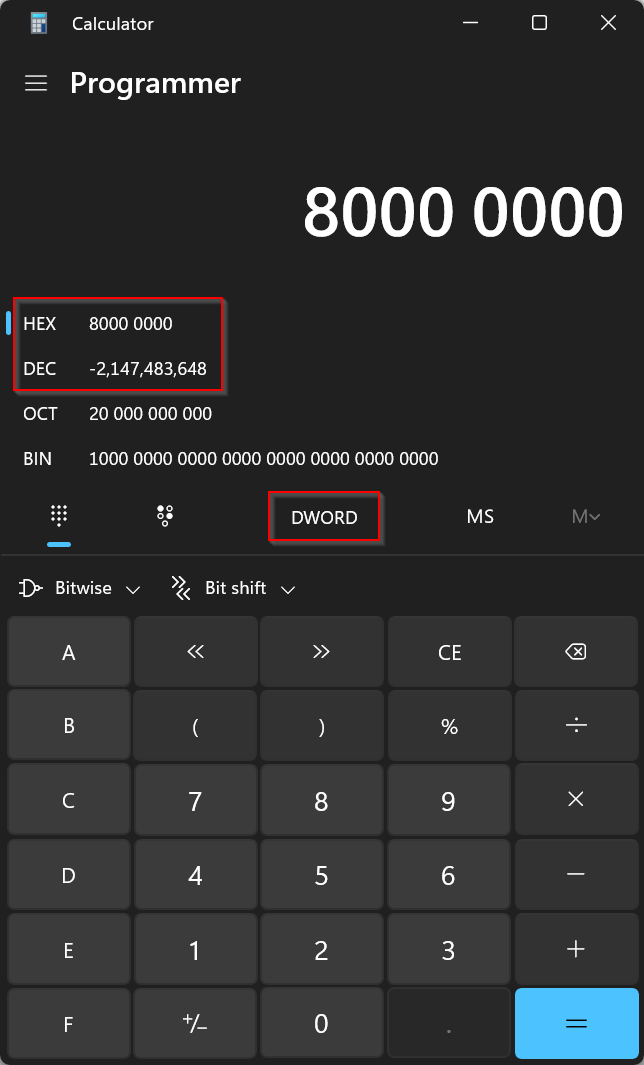StatusCode
 | Requirements This functionality is only available for Data Access devices based on TwinCAT 3 and the import of TMC symbol files. |
 | New implementation in setup version 5.x The functionality for the TwinCAT OPC UA Server in setup version 5.x is described below. This is followed by a description of the functionality for the TwinCAT OPC UA Server in setup version 4.x.. |
The TwinCAT OPC UA Server enables the adaptation of the OPC UA Status Code for a specific PLC symbol. Carry out the following steps to be able to change the StatusCode of a symbol at runtime.
Creating a structure
To ensure data consistency, the concept is based on a structure (see Structured Types). Each symbol for which the StatusCode is to be changed must be packaged in a structure.
Create a new structure and add the following pragma before the structure definition. The structure contains the symbol itself and a variable of data type DINT, which represents the StatusCode in decimal form.
{attribute 'OPC.UA.DA.StructuredType' := '1'}
{attribute 'OPC.UA.DA.StatusAndValue' := '1'}
TYPE ST_StatusCodeSimple :
STRUCT
value : REAL;
status : DINT := -2147155968; // equals 'BadCommunicationError'
END_STRUCT
END_TYPEYou can also use complex symbols, for example:
{attribute 'OPC.UA.DA.StructuredType' := '1'}
{attribute 'OPC.UA.DA.StatusAndValue' := '1'}
TYPE ST_StatusCodeComplex :
STRUCT
{attribute 'OPC.UA.DA.StructuredType' := '1'}
value : ST_Complex_1;
status : DINT := -2146762752; // equals 'BadServiceUnsupported'
END_STRUCT
END_TYPENow create an instance of this structure, e.g. in the MAIN program, and add the pragma to enable the instance via OPC UA.
PROGRAM MAIN
VAR
{attribute 'OPC.UA.DA' := '1'}
stStatusCodeSimple : ST_StatusCodeSimple;
{attribute 'OPC.UA.DA' := '1'}
stStatusCodeComplex : ST_StatusCodeComplex;
END_VARThe defined structure instances are now provided with the data type of the member variables defined as "value" in the TwinCAT OPC UA Server.

Changing the StatusCode at runtime
To change the StatusCode at runtime, simply edit the value of the member variable "status". If you set this to "-2147155968", as in the sample above, the StatusCode changes to "BadCommunicationError".


However, if you set the value to "0", the StatusCode changes to "Good".


The decimal value used here is defined by the OPC UA specification, here the current version of the StatusCode mapping. The table below lists some common StatusCodes and their numerical representation.
StatusCode | Hex | Decimal |
|---|---|---|
Good | 0x00000000 | 0 |
Uncertain | 0x40000000 | 1073741824 |
Bad | 0x80000000 | -2147483648 |
BadUnexpectedError | 0x80010000 | -2147418112 |
BadInternalError | 0x80020000 | -2147352576 |
BadCommunicationError | 0x80050000 | -2147155968 |
BadTimeout | 0x800A0000 | -2146828288 |
BadServiceNotSupported | 0x800B0000 | -2146762752 |
When calculating the decimal representation of a StatusCode on the basis of its hexadecimal representation, please note that your computer is set to DWORD, for example the Windows computer ("Programmer" view).

Use in Setup version 4.x
In the "older" implementation in Setup version 4.x, the variable is not displayed as a single variable on the OPC UA side, but as a structure in the same way as on the PLC side. There are also differences in the configuration of the attributes.
{attribute 'OPC.UA.DA.StructuredType' := '1'}
{attribute 'OPC.UA.DA.STATUS' := 'Quality'}
TYPE ST_StatusCodeSimple_V4 :
STRUCT
Value : REAL;
Quality : DINT := -2147155968; // equals 'BadCommunicationError'
END_STRUCT
END_TYPEThe StatusCode is only made available at the structure variable via OPC UA. The Value and Quality values contain the value and the value of the status code.
